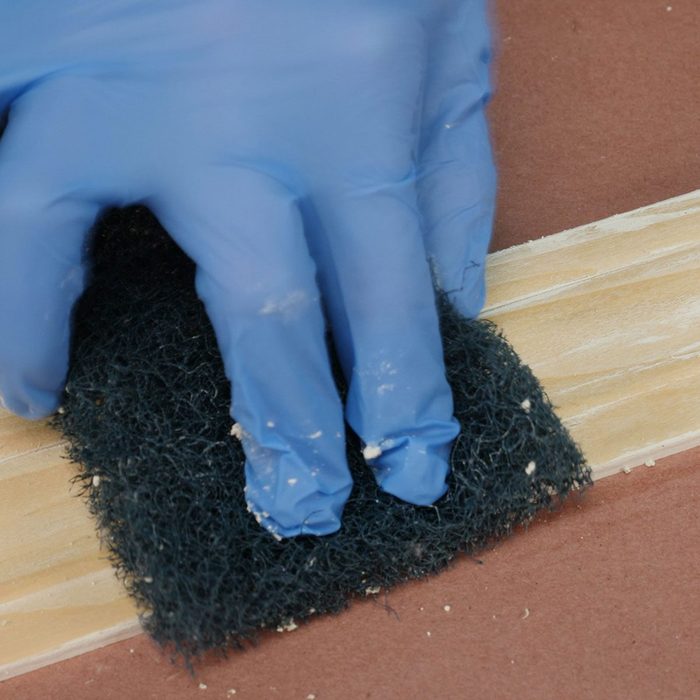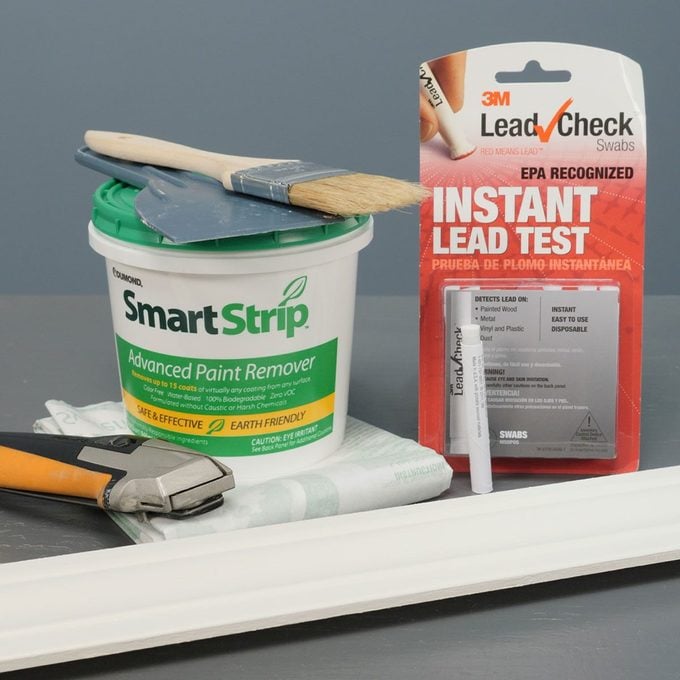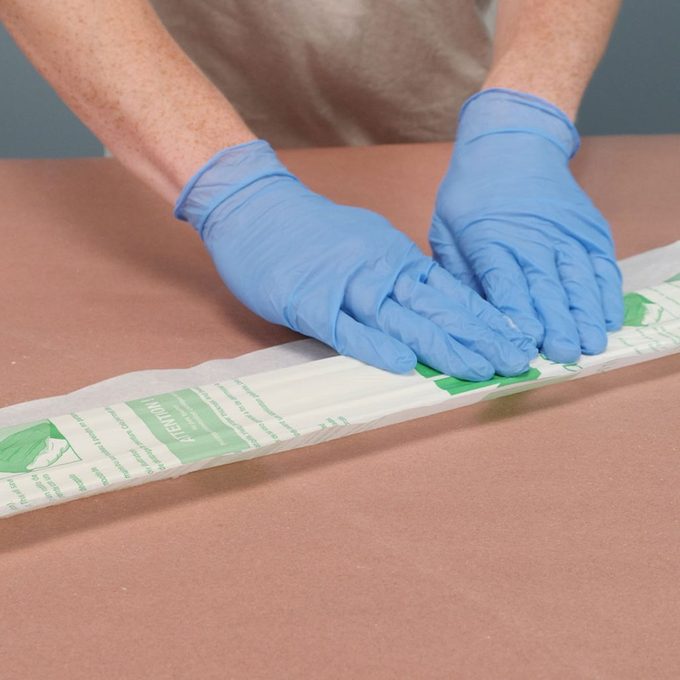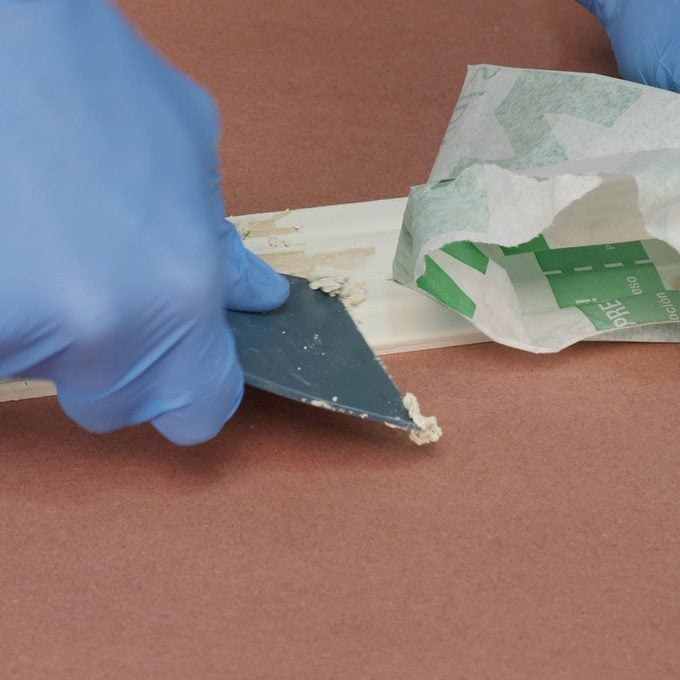How to Remove Paint from Wood
Updated: Feb. 08, 2024

What's the safest way to remove paint from wood? You can remove the paint from your woodwork easily with this low-VOC product from Dumond.
If you’ve been putting off a paint stripping project because you don’t want to deal with the smell of paint strippers and the time it takes to finish the job, you’ll be happy to know that there’s a better solution to heavy chemical strippers of yesteryear. Paint strippers are notoriously nasty, but newer low-VOC strippers safely remove paint from wood without the dangerous, unstable chemicals.
Whether you’re restoring furniture, bringing back an old staircase, or want to strip your trim from decades of paint, there’s no need to procrastinate any longer. For a less toxic way to remove paint from wood, our experts recommend Dumond Smart Strip (we’ll also tell you how to test for lead paint, for which the Dumond product isn’t recommended).
On This Page
What are VOCs?
VOCs, or volatile organic compounds, are found everywhere throughout our lives. The EPA describes them as chemicals that evaporate at room temperature. VOCs emit from a wide array of products used in homes, such as aerosol spray cans, household air fresheners, disinfectants and paint. While some dissipate harmlessly, others can be extremely dangerous, causing eye, nose and throat irritation at the minimum and, at worst, damaging your liver, kidneys or nervous system. What’s more, VOCs emit from products into the air both during use and while stored.
Remember to check the label before you invest in home improvement products, and in particular before buying a paint stripper. The most common and dangerous VOC that most traditional paint strippers contain is NMP (N-Methylpyrrolidone) and Methylene Chloride.
What is the Best Low-VOC Paint Remover?
Most paint strippers smell awful and can be dangerous to handle because of the harsh chemicals. We always recommend wearing protective gear when using solvents and dangerous equipment. Be sure to have ventilation when using any paint stripper. You may still need to use a stronger paint remover for tough jobs, a water-based or gel stripper will be less toxic for inhalation.
Our eco-friendly paint stripper pick is Dumond Smart Strip Advanced Paint Remover. It removes up to 15 layers of paint down to bare wood. Smart Strip is a water-based low-VOC paint remover that doesn’t contain NMP or Methylene Chloride, however, it’s not completely nontoxic as ingredients can be harmful and precaution should be used. Dumond Smart Strip is nearly double the price of traditional paint strippers, but it is truly worth the cost for a safer, faster removal.
How to Remove Paint from Wood Without Damaging the Wood
Family Handyman always suggests doing a test area when using a stripper. Use a plastic scraper—rather than metal—when removing the paint and stripper to avoid damaging the wood.
You can also use a heat gun to remove paint from wood. A heat gun can loosen the paint so you can scrape it off the wood, again with a plastic scraper.
Other more laborious ways to remove paint from wood include sanding it down, but that takes the right tools and skill level to avoid permanently gouging the wood or sanding too deep.
How to Remove Paint From Wood Using Dumond Smart Strip
This process will take away everything down to bare wood. You should then lightly sand before repainting or applying varnish or polyurethane.
We used Dumond’s Peel Away Laminated Paper to speed up the process and aid in removal, but you can get away without using this product. However, the paper will help make cleanup easier, as most of the old paint will come off with the paper.
What You Need

- Dumond Smart Strip
- Safety gear, including gloves, goggles, respirator mask, long sleeves and pants
- Lead test kit (to determines if the paint to be removed contains lead)
- Disposable paint brushes
- Optional: Dumond’s Peel Away Laminated Paper
- Plastic putty knife
- Multi-purpose scrapers
- Scrub pads
- Hazardous waste trash container
Directions
1. Test for Lead Paint
Before you begin stripping paint, you need to test the paint for lead, especially if your home was built before 1970. 3M sells LeadCheck swabs that instantly tell you whether or not existing paint contains lead. If it does, you will need to take extra precautions while stripping the paint. Cut a 2-inch notch out of the paint with a utility knife, snap the chemicals in the LeadCheck tube, mix them together and swab the paint. If the tip of the swab turns red or pink, lead is present, and you must follow a different process to remove lead paint. If not, you are safe to continue. Here’s what you need to know about stripping wood furniture.
2. Brush On Paint Stripper
Apply a generous amount of paint stripper to the painted surface. Goop it on, don’t be shy.
Your brush cannot be reused after this process, which is why we recommend using a cheap paint brush.
3. Apply Laminated Paper (Optional)

Stick the Laminated Paper directly to the paint stripper-treated surface, which will help to soften the paint. For tough projects, you can leave the stripper and paper in place for 24 hours.
4. Scrape Off the Paint

Remove the Laminated Paper and strip the paint with a plastic scraper and the detail scrapers to get into small crevices.
5. Scrub Away The Last of the Paint
The previous step will take away much of the paint, but you still need to immediately clean up any remnants with a scrub pad and warm water.
6. Dispose of The Waste Properly
Check your local garbage rules about how you should throw out the old paint peelings and paper, and dispose of them properly.
